Sat 20 Oct 2018
Celebrating the harvest; a raccoon sniffs a skunk’s rear end; and other images of fall
Posted by DavidMitchell under Wildlife
Comments Off on Celebrating the harvest; a raccoon sniffs a skunk’s rear end; and other images of fall
Caveat lectorem: When readers submit comments, they are asked if they want to receive an email alert with a link to new postings on this blog. A number of people have said they do. Thank you. The link is created the moment a posting goes online. Readers who find their way here through that link can see an updated version by simply clicking on the headline above the posting.
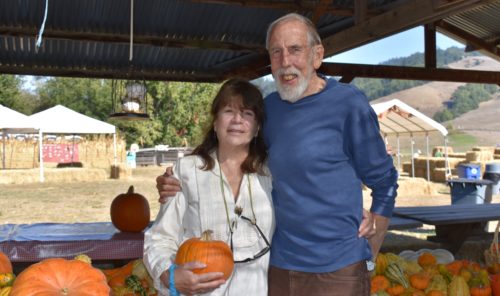
Sorting through pumpkins. On Wednesday, Lynn and I headed over to Nicasio’s enormous pumpkin patch and bought a medium-sized squash for our harvest-season horn of plenty.
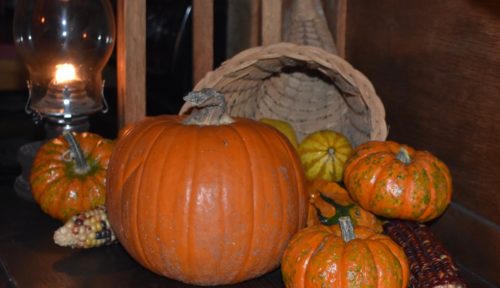
Each year we celebrate the harvest with an old-fashioned cornucopia in our front room.
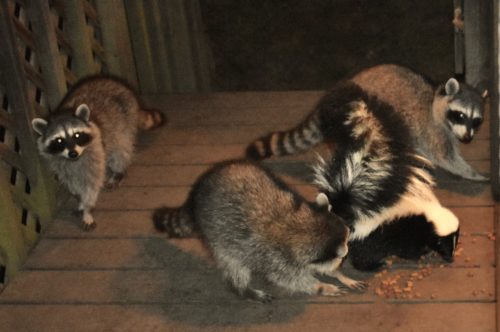
This fall we’ve become used to seeing what I once would have considered an odd event, a skunk eating with a family of raccoons. Like dogs, raccoons confirm each other’s identity by sniffing rear ends, and they don’t hesitate to sniff a skunk’s backside. This skunk raises its tail as if it’s going to spray, but it never does. The raccoons and skunk sometimes shoulder each other as they compete for kibble on our deck. At first, I would occasionally hear faint growls during these matchups, but no more.
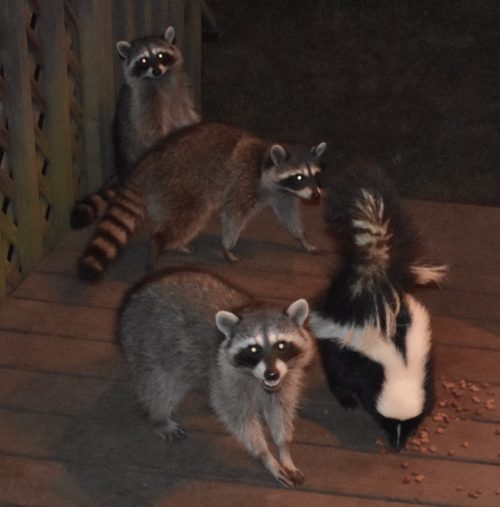
When I started photographing them Friday night, the camera’s flashes immediately caught the raccoons’ attention. The skunk, on the other hand, didn’t even look up.
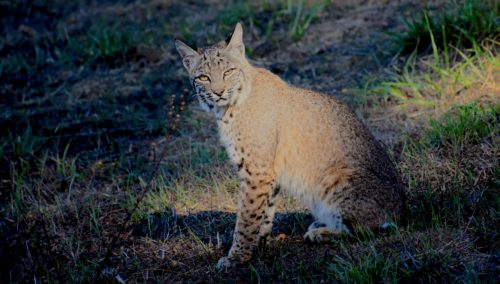
Bobcats are crepuscular, meaning they are most active around dusk and dawn. In recent months, we’ve repeatedly seen them around Mitchell cabin. This one was sitting in a spot of sunlight outside our kitchen window this past week. (Photo by Lynn Axelrod Mitchell)
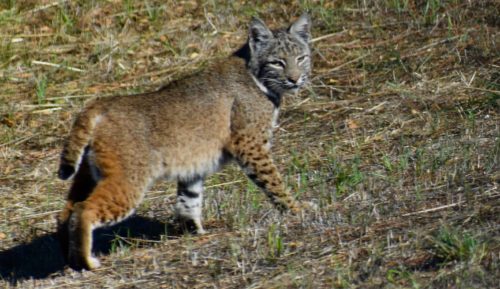
Male bobcats do not help raise their young, which are born blind. The kits stay with their mothers more than half a year. Adults are said to roam up to seven miles per night. (Photo by Lynn Axelrod Mitchell)
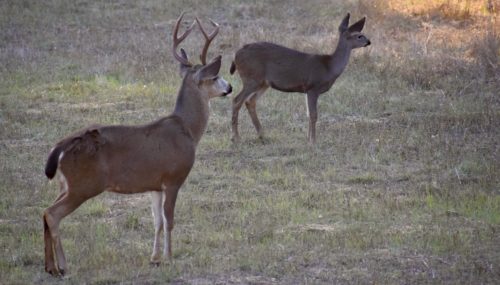
Two or more blacktail deer show up daily. Judging from the fur on this buck’s rump, he’s probably been chewing on an itchy spot.
For Lynn and me, this fall is off to a good start. May you too enjoy the autumn.

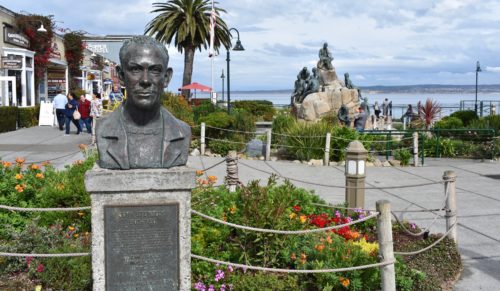
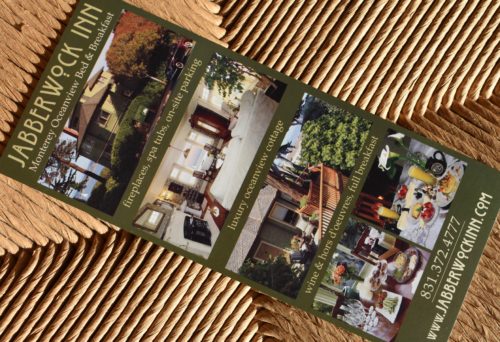
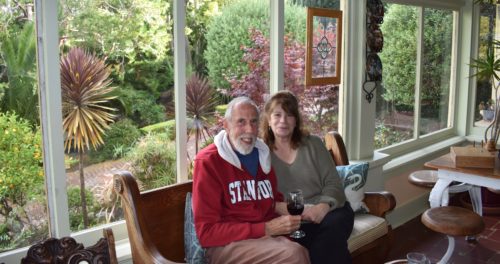
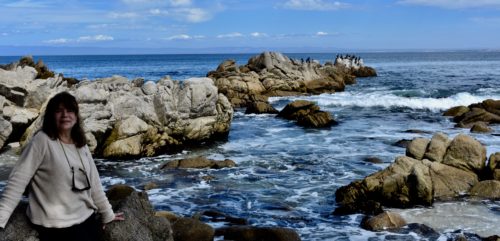
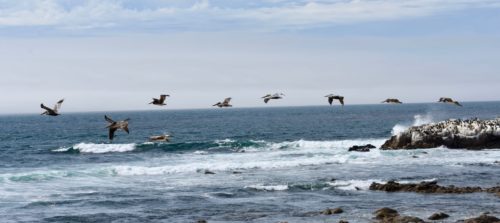
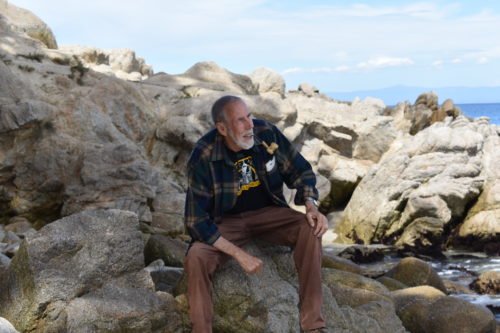

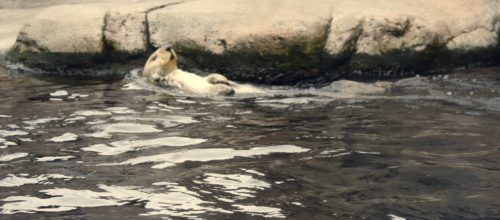
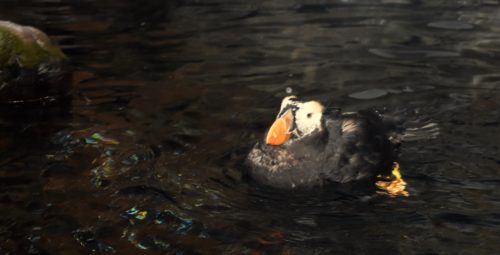
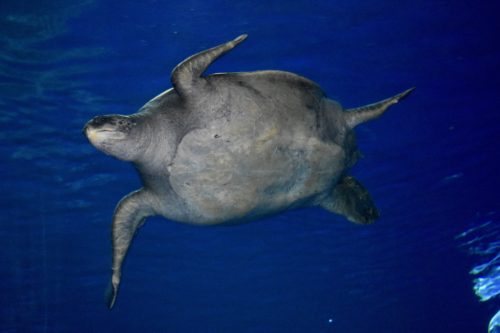
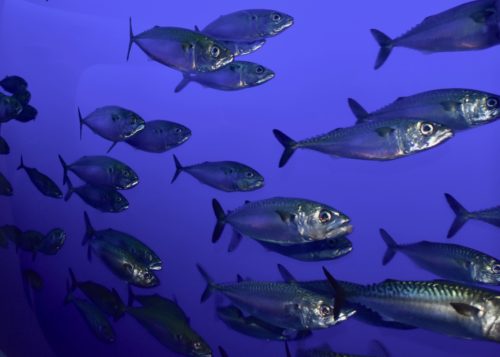
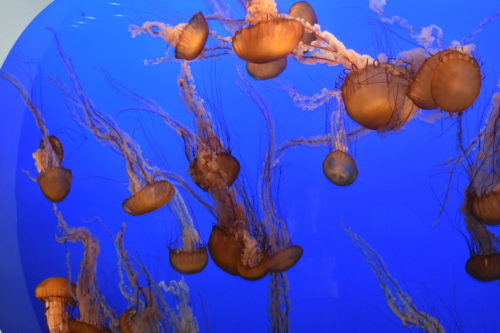
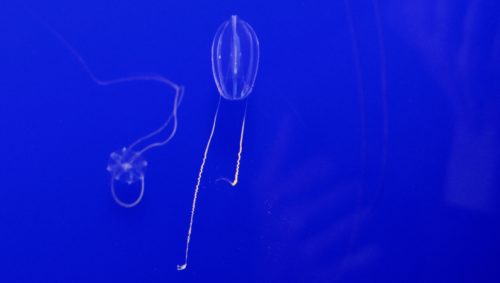
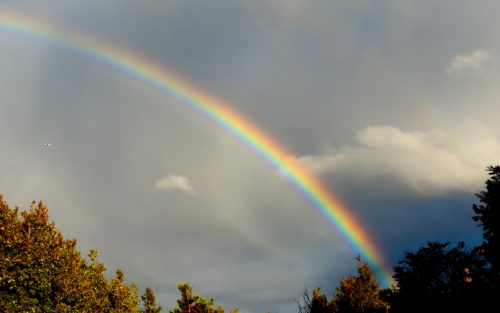
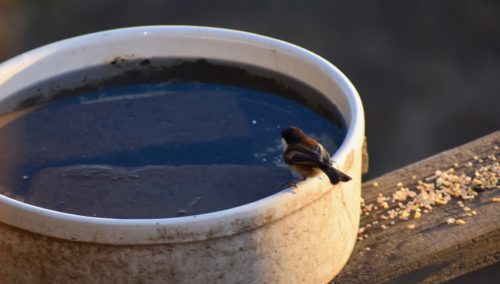
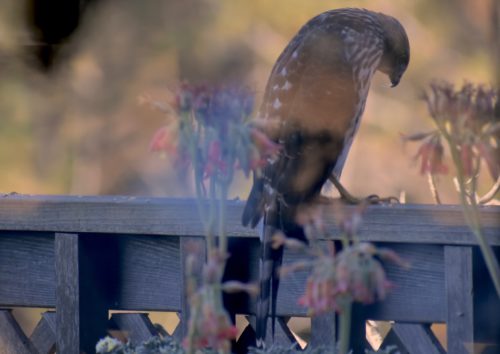
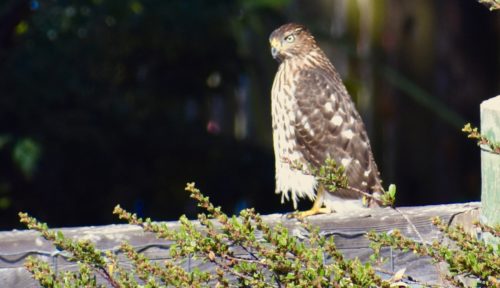
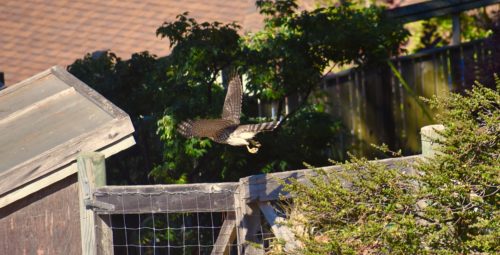
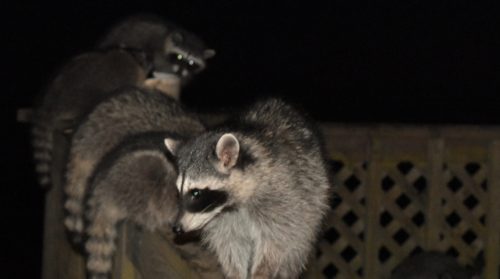

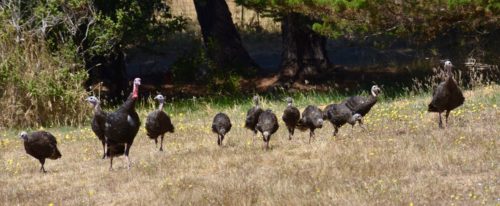

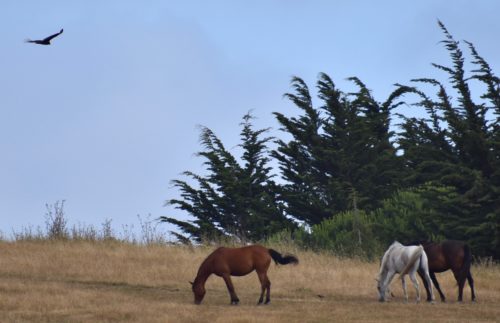


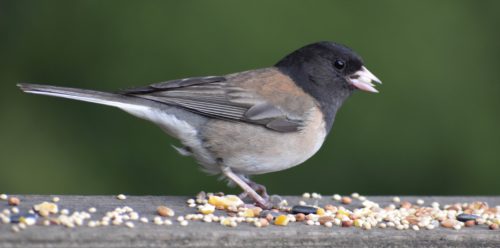
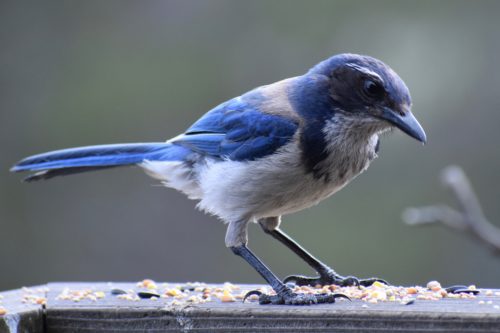
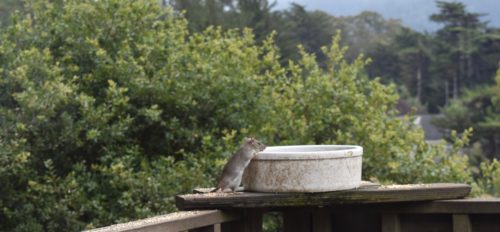
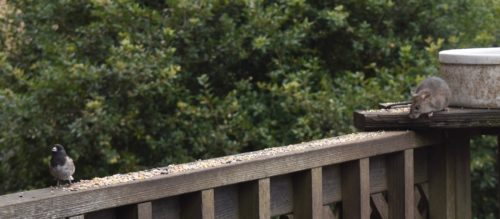
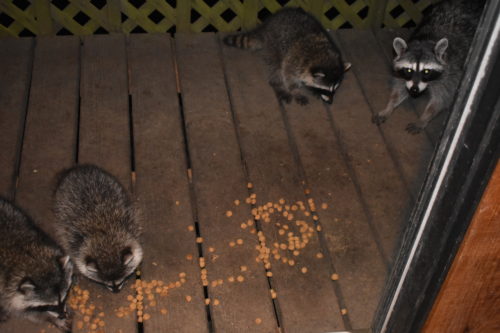
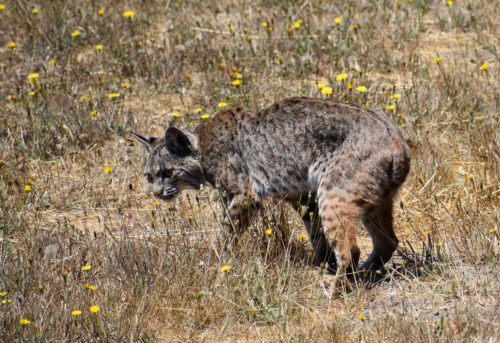
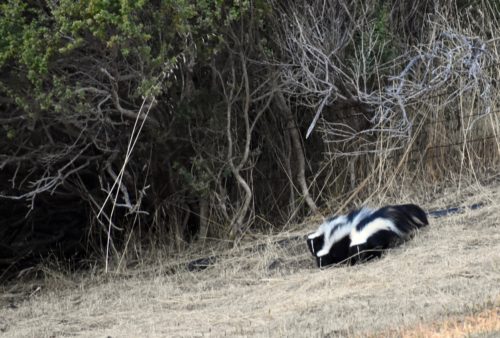


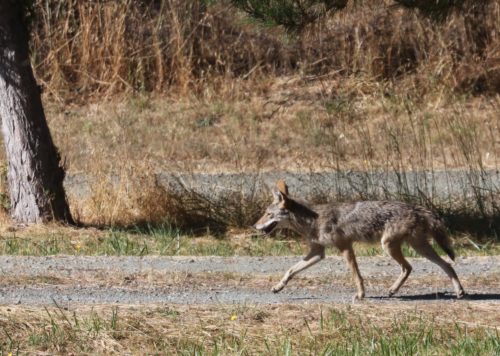
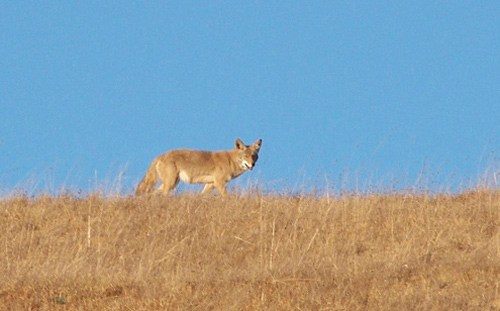
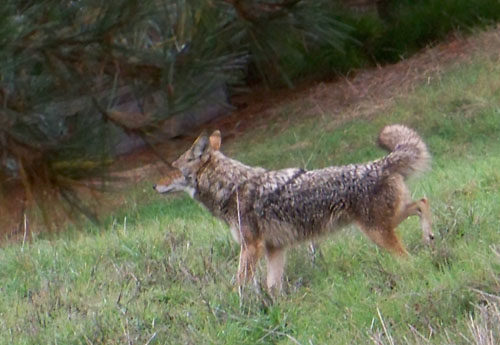
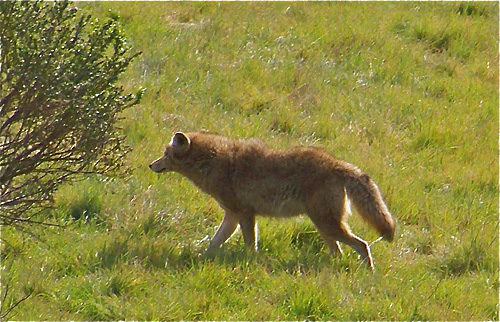
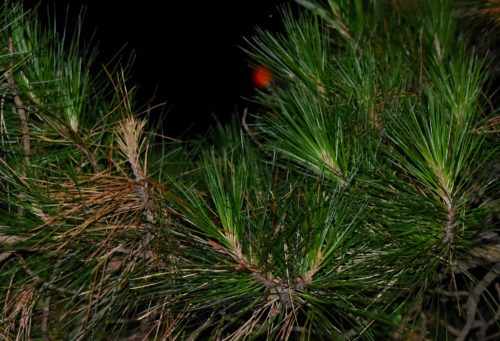
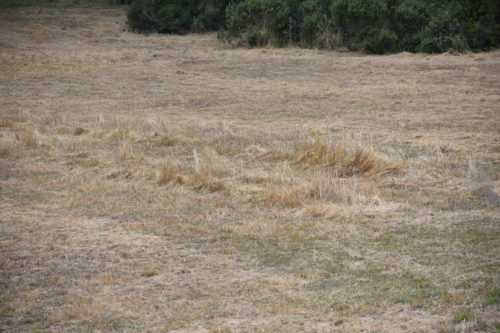
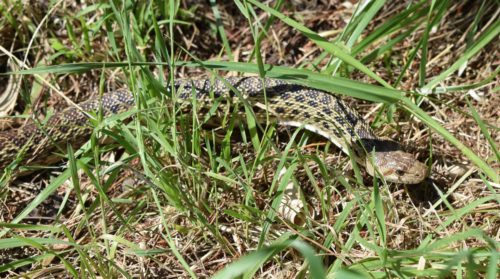
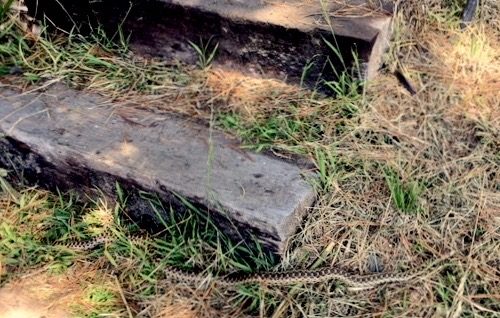
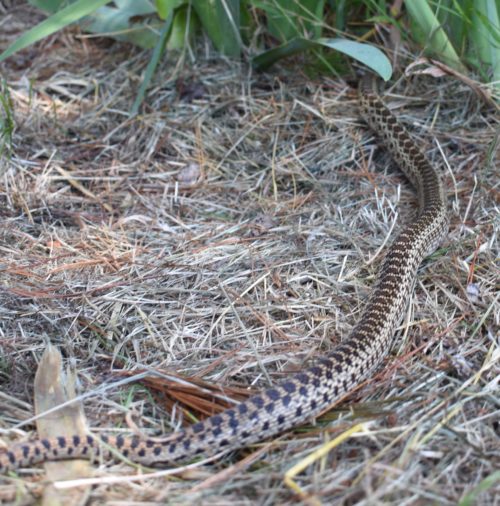
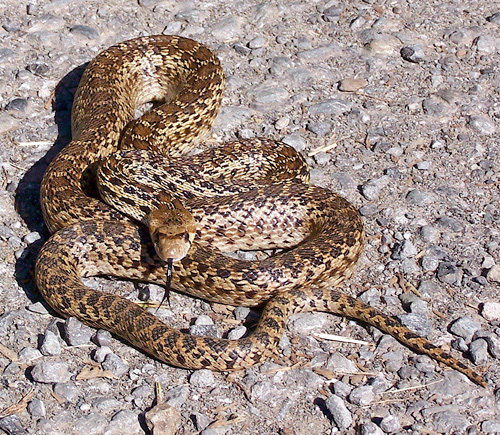
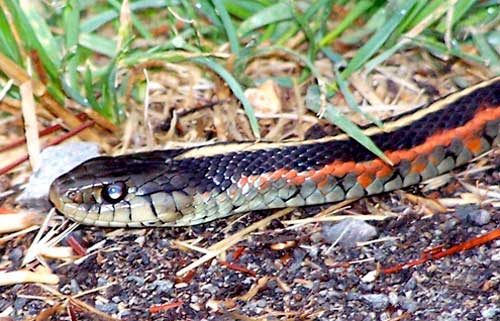
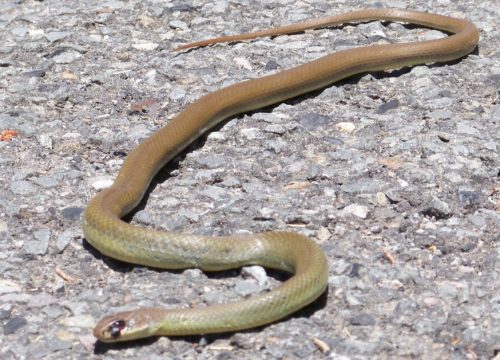

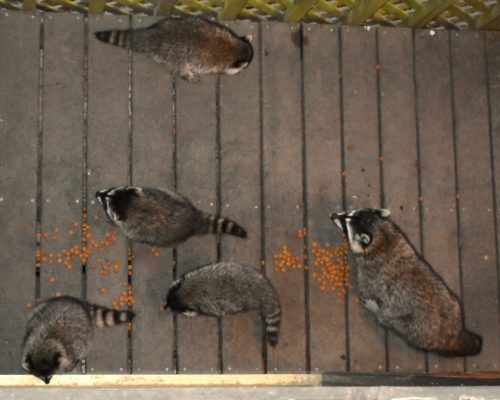
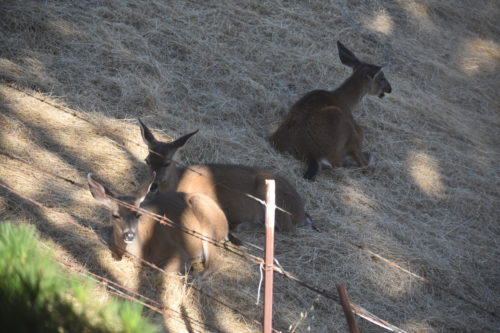
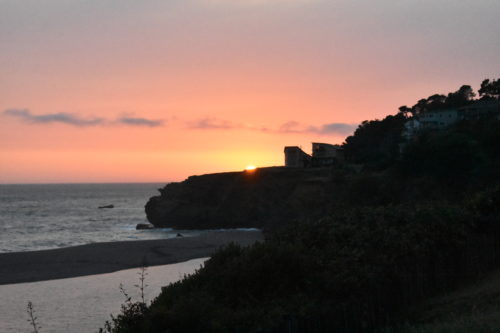
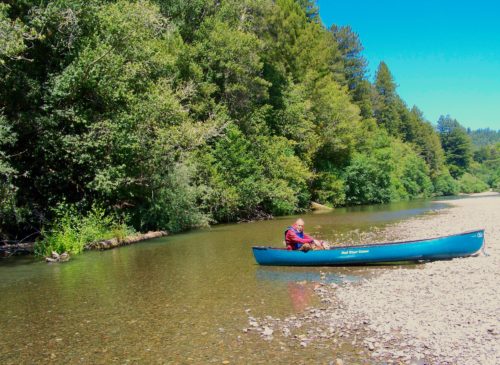
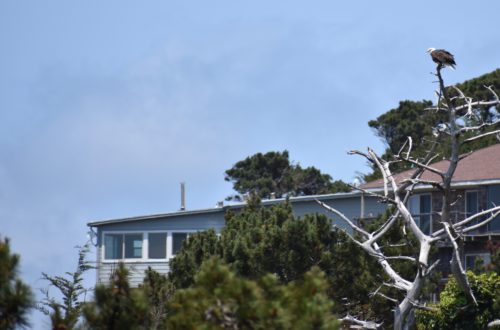
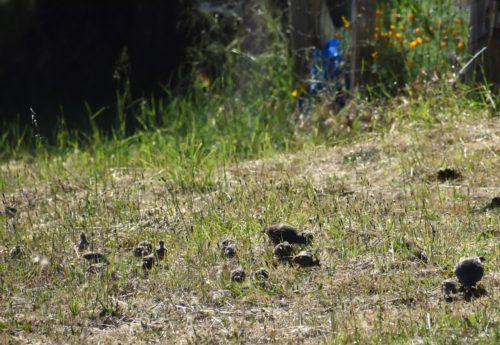
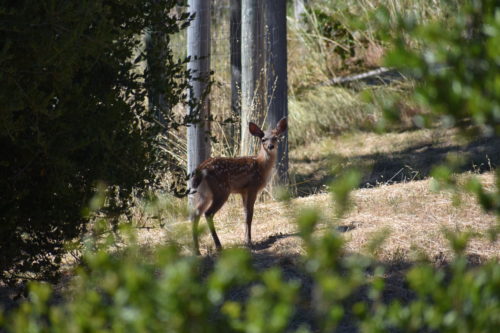
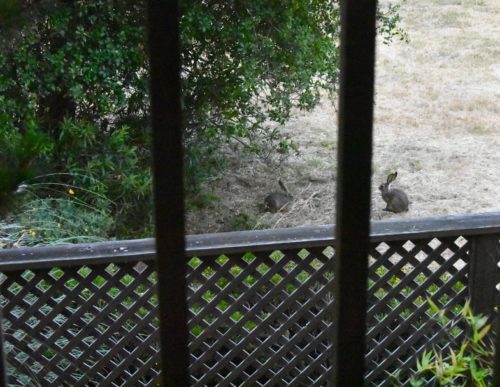
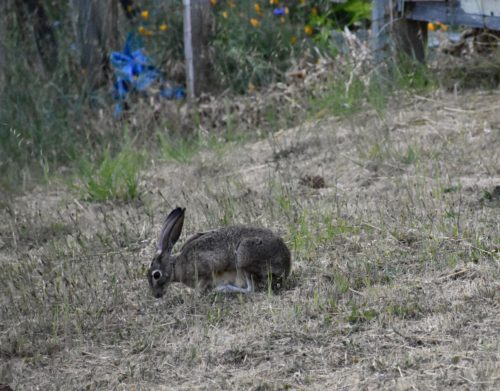
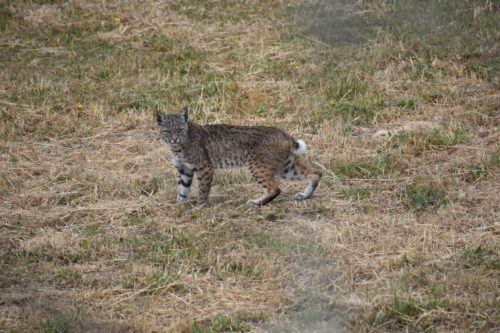
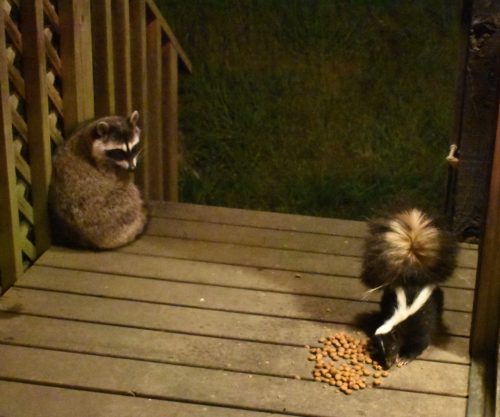
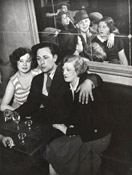
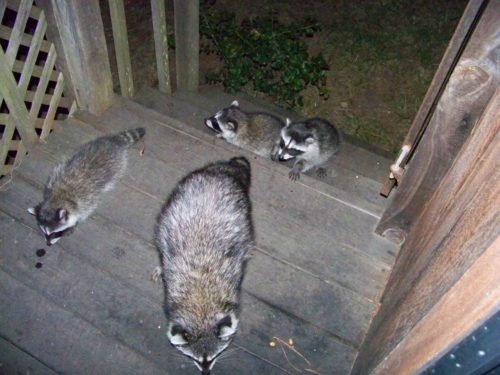
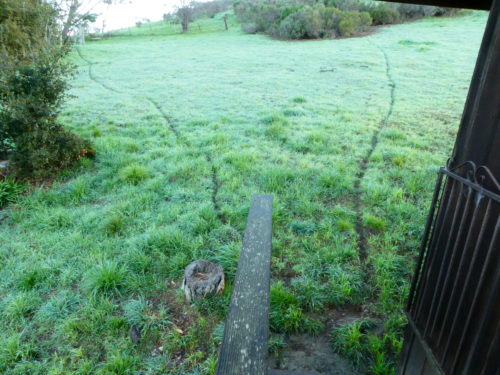

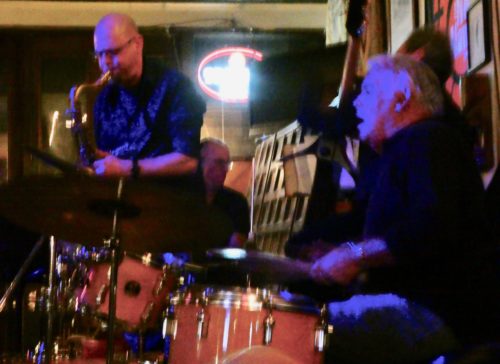 To round out this set, here is the Michael Aragon Quartet playing jazz last Friday evening, as they always do, in Sausalito’s No Name Bar. Aragon is the drummer. Predictably the performance was excellent as it’s been for three decades, but the surprise for barkeep J.J. Miller came when I told him about a street in Rohnert Park which is also named “No Name.” I just discovered it myself a week ago. One possible reason the street isn’t better known is that it’s only one block long.
To round out this set, here is the Michael Aragon Quartet playing jazz last Friday evening, as they always do, in Sausalito’s No Name Bar. Aragon is the drummer. Predictably the performance was excellent as it’s been for three decades, but the surprise for barkeep J.J. Miller came when I told him about a street in Rohnert Park which is also named “No Name.” I just discovered it myself a week ago. One possible reason the street isn’t better known is that it’s only one block long.